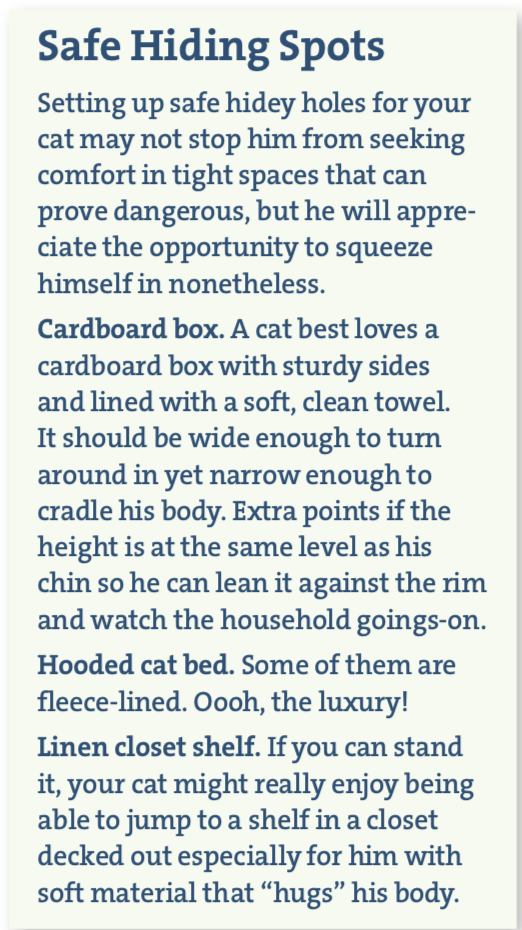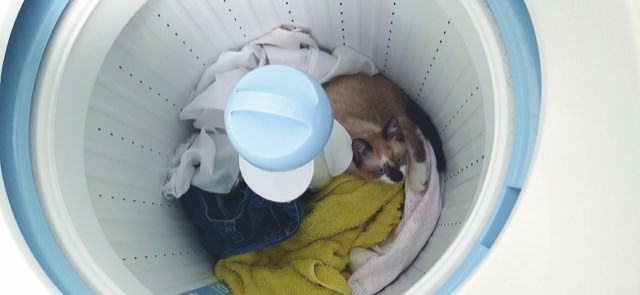The cat was out of the bag, literally, once he was discovered by a TSA worker at Kennedy Airport in New York. A man packing for a flight to Orlando, Florida, hadn’t noticed the addition to his luggage, which came to light when the suitcase was x-rayed — a good thing since the cat might not have survived the journey in cargo.
We know why cats like tight spaces. It “hugs” their sides, making them feel cozy and secure, and radiates their body heat back to them. But sometimes a preferred spot poses a true danger. Along with suitcases, consider the following:
Clothes dryer. A clothes dryer is small, dark, and often warm — the perfect place to cozy. If some nice fluffed up towels are in there, so much the better. But it’s a death trap for a cat who ends up going round and round with the laundry. There are no statistics on how often cats get mangled and burned to death in clothes dryers, but it is by no means unheard of. Never leave the dryer door open unless you’re putting in or taking out laundry.
Washing machine. Washing machine mishaps are not as common, but they do occur. In one incident reported in the Canadian Veterinary Journal, an 8-year-old cat recovered after she was found agitating with the laundry for just a single minute. In another incident, a 3-month-old kitten was stuck in a front loader set to the hot cycle for an estimated 5 to 10 minutes. After suffering head trauma and aspiration pneumonia, she did not make it. (A cat caught in a washing machine can also die from drowning.)
Due to the risk for such accidents, litterboxes should not be kept in the laundry room. It makes a cat’s access to dangerous appliances too easy.
Garage. Cats consider garages good places because they’re  away from the action. They’re the feline equivalent of a teenager having the basement to himself. But garages often contain cleaning agents and other chemicals such as antifreeze, which tastes good to cats but is poisonous to them.
away from the action. They’re the feline equivalent of a teenager having the basement to himself. But garages often contain cleaning agents and other chemicals such as antifreeze, which tastes good to cats but is poisonous to them.
Under the hood of the car. Many cats like to hang out by the engine. If yours is one of them, bang on your hood each time you’re about to go driving and honk the horn for good measure. It’s an effective way to rouse your pet and give him a chance to skedaddle before you start the vehicle.




